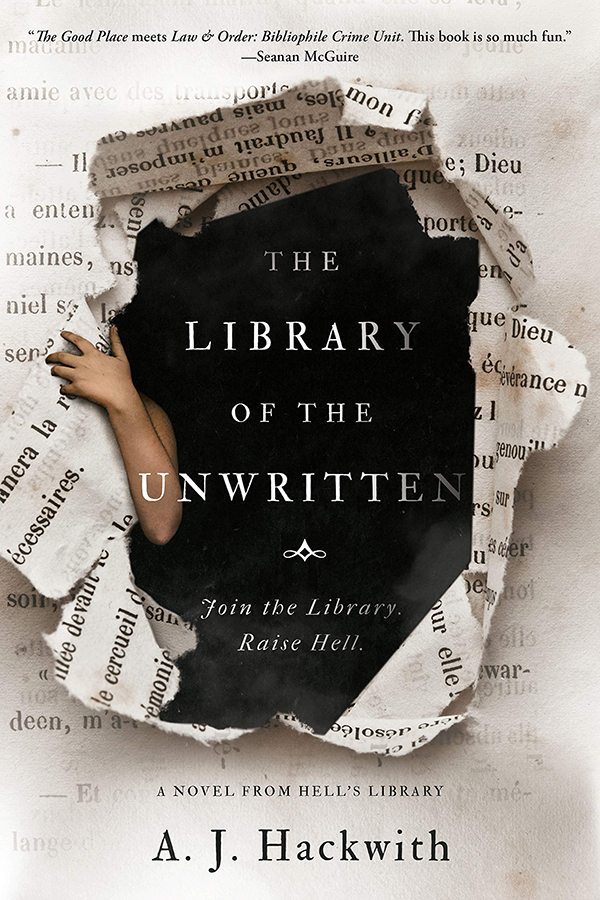J. Hackwith’s The Library of the Unwritten is a story about stories, but mostly about humanity. It strikes out with a diverse cast of characters, a heaven-versus-hell dynamic that fans of Good Omens will appreciate, and clever worldbuilding to deliver a love letter to writing and storytelling.
Claire Hadley is head librarian of the Unwritten Wing of Hell’s library. This library is unique not only for its location or for the fact that it contains books, art, and rugs that are more dreamt than made: sometimes books escape. Unwritten books can get restless and manifest as one of the characters from their story, and the events of the novel are kicked off when one sly hero escapes from the library and makes it to Seattle to find his author and change his fate.
The Library of the Unwritten is notable for its layered characters and how well it develops them — and their secrets. Each of the primary characters (except, perhaps, for the exiled angel Ramiel who is consigned to being an angel, and therefore is predictable) has a carefully foreshadowed backstory and is more than they appear at first. We learn very quickly that Leto is not actually a demon, but that this is the punishment his soul believed he deserved for whatever he did on Earth before dying. Claire has nearly as many secrets and tragic elements to her backstory as she does skirt pockets (many). Her assistant Brevity, a former muse who — except for the mystery of why she was kicked out — seems to be simply as bubbly and one-dimensional as she appears, is quickly revealed to be much more complicated once we get inside her head.
The novel relies on archetypes but is subtle in how it subverts them. Characters that manifest from unwritten books fall into categories like “damsel” or “hero,” and the protagonists seem to fit similar, albeit more nuanced models: Claire is the competent, pragmatic (even cold-hearted) head librarian who will not compromise her duty; Brevity is the bubbly, compassionate sidekick that balances her out; Leto is innocent, loyal, and imbued with a heroic streak. The manifested hero character who escapes early in the novel literally chooses to name himself “Hero.” Rather than obviously subverting these moulds, ***The Library of the Unwritten points to the fact that they are archetypes and lets the actual characterization and nuance do the work of subverting them. In the subtle offbeats of these moulds, Hackwith plants some of her best foreshadowing.
Although characters are what make the story, the one area The Library of the Unwritten struggles with the most is differentiating the rotating points of view that narrate the book. Chapters that follow the main cast often seem to forget whose points of view they were supposed to be in, sometimes using names or nicknames that the narrator would not know, or going entire pages without any interjection from the narrator — to the point where I forgot who the point-of-view character was supposed to be.
However, with its twisting turns, fast pace, delightful worldbuilding, and clever foreshadowing, The Library of the Unwritten is definitely worth the read.


